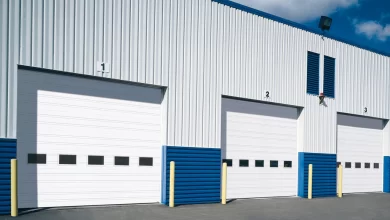Understanding the Responsibility of a Modern Gardener
Do you find yourself wanting to give back to the ardent nature that surrounds and comforts us? Are you on the hunt for innovative methods to lessen your footprints, while presenting your garden with the care and verdancy it deserves? Have you been in two minds about adopting sustainable gardening practices, but found yourself unsure about where to start?
In this post, we’ll delve into the very essence of responsible gardening, offering insights into why, how, and what entail its practices. From the characteristics of sustainability, essential tools and techniques to the advantages and drawbacks, this colossal guide will provide an end-to-end perspective on the fascinating world of sustainable gardening.
So, let’s step into our green wellingtons, dust off those gloves, and explore the realm of sustainable practices designed with the modern gardener in mind.
The Green Gaia: Why Sustainable Gardening Matters
To comprehend the importance of sustainable gardening, it’s crucial to understand that we’re interconnected with our environment in a tangible symbiosis. While our garden furnishes us with beauty, relaxation, and nourishment, it relies on us for its maintenance and survival. So, how can we cater to our gardener’s calling and also protect our planet?
Adopting sustainable practices in gardening aids in reducing waste, conserving water, and fostering soil health. Not only does this makes our gardens resource-efficient, but it also supports local biodiversity. Moreover, when contrasted with the harmful effects of non-organic fertilisers and pesticides, going green highlights a safer alternative for our health and surroundings.
Green Spades, not Green wash: What it means to practice sustainability in Gardening
Considering sustainability in gardening calls for a keen understanding of the gardener’s role in the broader context of environmental conservation. But what does it exactly mean to practice sustainability in the garden?
Sustainable gardening is not just about growing plants in an eco-friendly manner or recycling waste within the garden; it is a lifestyle choice that extends beyond one’s backyard. It encompasses water conservation, soil management, waste reduction, and the creation of habitats for wildlife. Implementing these practices means aligning our gardening routines with the broader environmental goals.
Sowing the Seeds: When to Introduce Sustainable Practices
Individual timelines will differ based on personal goals, level of commitment, and local environmental considerations. However, the best time to introduce sustainability into your gardening routine always remains – Now!
Like any new venture, starting small is often a prudent strategy. Begin with reducing water usage or composting kitchen waste. Slowly extend efforts to include aspects like native planting, soil health, and attracting pollinators.
The Verdant Innovator: Who can embrace Sustainable Gardening?
The beautiful truth about sustainable gardening, it doesn’t discriminate! You could be a seasoned gardener with a sprawling green oasis or a greenhorn residing in an urban concrete jungle yearning to add some green to your balcony. The process of adopting sustainable gardening practices is a journey of continual learning and improvement, open to gardeners of all scales and expertise.
For intricate landscaping or larger garden designs, professional environmental designers can render an invaluable service. Nevertheless, it begins with the individual—a single plant, a single compost pile can lay the foundations for greener outcomes.
The Green-Spectacles: Pros and Cons of Sustainable Gardening
Sustainable gardening practices are cost-effective in the long run, promote biodiversity, and contribute to mitigating Climate Change. They foster a healthier, more vibrant garden space. However, they do require time investment, learning, and initial costs can be higher compared to conventional methods. Additionally, depending on local ecosystems, not all practices are universally applicable.
Tools of Green: Essential Elements for Sustainable Gardening
Harnessing nature’s resources to their best potential, sustainable gardeners employ tools that enhance the garden’s health and productivity. Compost bins, rain barrels, drip irrigation systems, mulching materials are some such sustainable implements. Native plants and trees, beneficial insects, and home-made organic pesticides further emphasise the garden’s connect with nature.
The Last Leaf: In Conclusion
Sustainable gardening is not just a trend or a hobby, but a responsibility we bear towards our environment and future generations. Although it may present its challenges, the benefits overwhelmingly make it a worthy cause. By adopting sustainable practices, gardeners can reconcile their love for nature with their responsibility towards it.
In essence, each gardener nurturing their plants sustainably, is a torchbearer of change, holding the potential to create ripple effects far beyond their garden fences. As modern gardeners let’s see our green spaces as opportunities – opportunities that allow us to flourish, even as we ensure our earth, the biggest garden of all, thrives and blooms.



